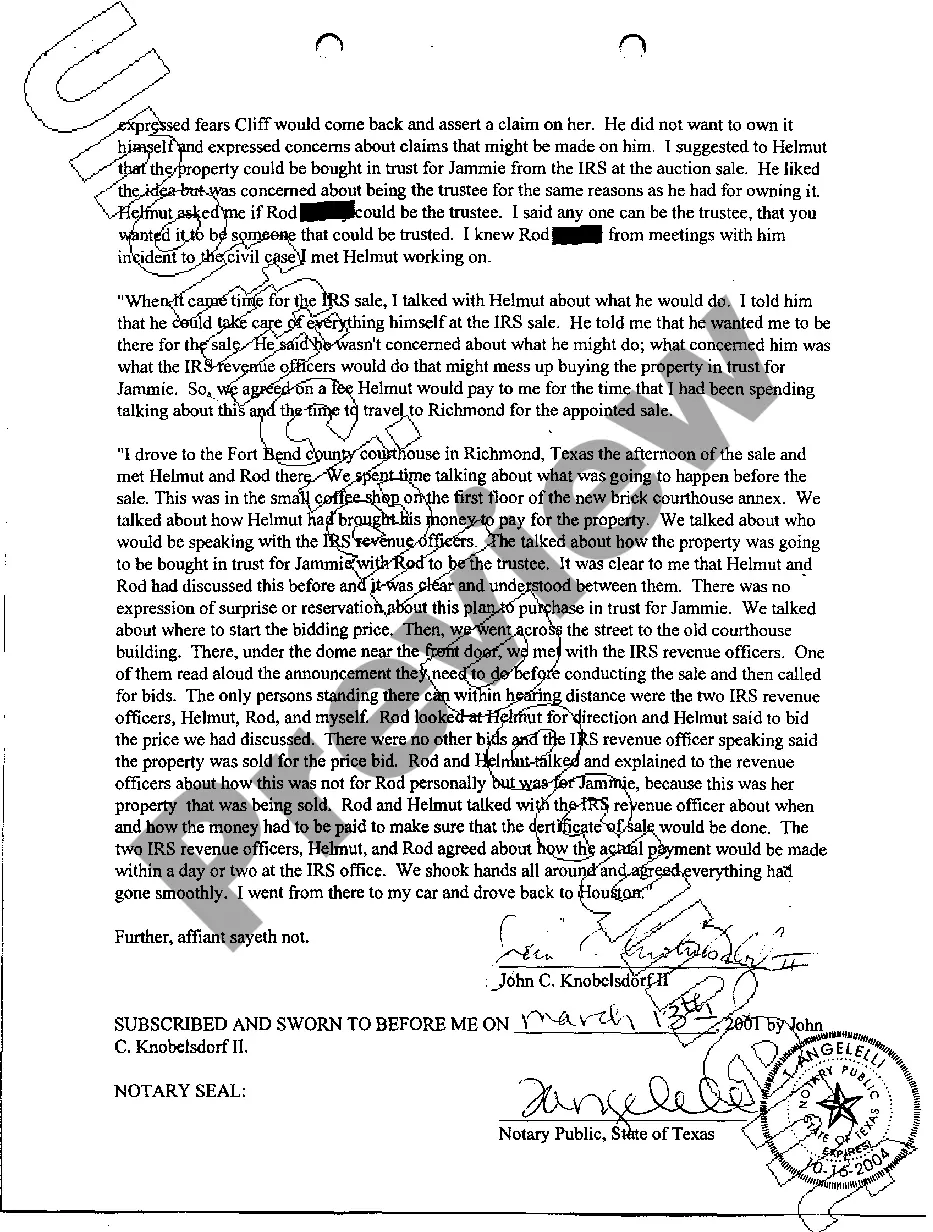Title: Understanding the Wichita Falls Texas Response to Plaintiffs' Request for Disclosure Introduction: In legal proceedings, the Wichita Falls Texas Response to Plaintiffs' Request for Disclosure plays a crucial role. This legal document provides a detailed response to the plaintiffs' request for disclosure, emphasizing pertinent information related to the case. In this article, we will delve into the process and purpose, as well as different types of responses, ensuring a comprehensive understanding of the Wichita Falls Texas Response to Plaintiffs' Request for Disclosure. I. Purpose of the Wichita Falls Texas Response to Plaintiffs' Request for Disclosure: 1. Ensuring Transparency: The response aims to promote transparency, enabling both parties to discover the necessary information before the trial begins. 2. Facilitating a Fair Process: This document ensures fairness by allowing both parties to exchange relevant information, avoiding any surprises during the legal proceedings. 3. Narrowing the Scope: The response assists in narrowing down the issues of the case, preventing unnecessary delays during the litigation process. 4. Complying with Texas Civil Procedure: The response fulfills the legal obligation of responding to the plaintiffs' request for disclosure, as specified under Texas Civil Procedure. II. Contents of the Wichita Falls Texas Response to Plaintiffs' Request for Disclosure: 1. Identification: The response begins by identifying the defendant, their attorney, and other essential parties involved in the case. 2. Statement of Objections: If applicable, the response may include objections to specific requests for disclosure, citing legal grounds for such objections. 3. General Objections: The response may include general objections covering voluminous or irrelevant requests, designed to streamline the disclosure process. 4. Admissions: The response may contain any relevant admissions, affirming or denying specific requests for disclosure made by the plaintiff. 5. Specific Disclosure Responses: This section provides detailed answers to each request for disclosure, addressing the information or documents sought by the plaintiff. 6. Privilege Claims: If certain information or documents are protected by privilege (such as attorney-client privilege), the response may assert privilege claims for non-disclosure. 7. Protective Orders: In some cases, the response may request the court to issue a protective order, safeguarding sensitive information that requires limiting disclosure to specific parties. III. Types of Wichita Falls Texas Response to Plaintiffs' Request for Disclosure: 1. Full Compliance Response: This type of response indicates the defendant's full compliance with all the plaintiffs' requests for disclosure, providing the necessary information without objections. 2. Partial Compliance Response: This response addresses the plaintiffs' requests for disclosure by partially complying while objecting to certain requests on valid legal grounds. 3. Limited Compliance Response: In this type of response, the defendant complies with only some specific requests and objects to the rest, citing reasons for non-disclosure. Conclusion: Understanding the Wichita Falls Texas Response to Plaintiffs' Request for Disclosure is essential for both plaintiffs and defendants involved in legal proceedings. By clearly responding to disclosure requests, this document facilitates the fair exchange of information, ensuring transparency and a smooth litigation process. Whether it is a full compliance, partial compliance, or limited compliance response, this document serves as a crucial tool in promoting a just and efficient resolution of legal disputes in Wichita Falls, Texas.
Wichita Falls Texas Response To Plaintiffs Request For Disclosure
Description
How to fill out Wichita Falls Texas Response To Plaintiffs Request For Disclosure?
We always want to minimize or prevent legal issues when dealing with nuanced legal or financial matters. To do so, we sign up for legal services that, usually, are extremely costly. Nevertheless, not all legal issues are as just complex. Most of them can be dealt with by ourselves.
US Legal Forms is a web-based collection of updated DIY legal forms covering anything from wills and powers of attorney to articles of incorporation and petitions for dissolution. Our platform helps you take your matters into your own hands without the need of using services of an attorney. We provide access to legal document templates that aren’t always publicly accessible. Our templates are state- and area-specific, which considerably facilitates the search process.
Take advantage of US Legal Forms whenever you need to get and download the Wichita Falls Texas Response To Plaintiffs Request For Disclosure or any other document quickly and safely. Simply log in to your account and click the Get button next to it. If you happened to lose the document, you can always re-download it from within the My Forms tab.
The process is just as straightforward if you’re new to the platform! You can create your account within minutes.
- Make sure to check if the Wichita Falls Texas Response To Plaintiffs Request For Disclosure adheres to the laws and regulations of your your state and area.
- Also, it’s imperative that you check out the form’s outline (if provided), and if you spot any discrepancies with what you were looking for in the first place, search for a different template.
- As soon as you’ve made sure that the Wichita Falls Texas Response To Plaintiffs Request For Disclosure would work for you, you can choose the subscription option and make a payment.
- Then you can download the document in any available file format.
For over 24 years of our existence, we’ve served millions of people by offering ready to customize and up-to-date legal forms. Make the most of US Legal Forms now to save efforts and resources!







